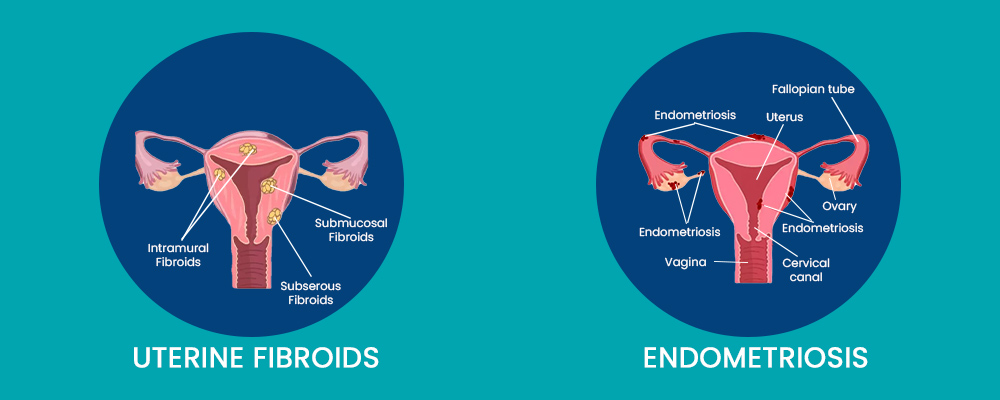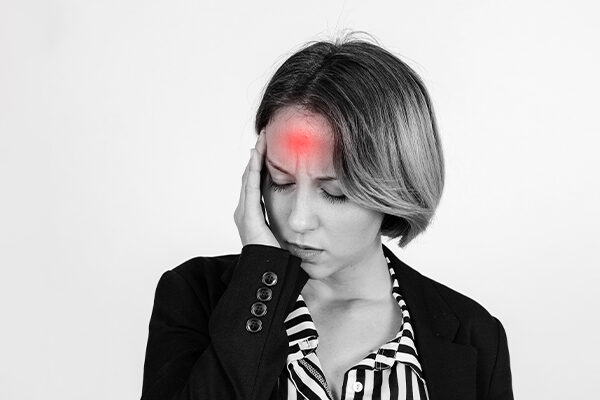Last Updated on December 19, 2023
Introduction: Endometriosis vs Fibroids
In the landscape of women’s health, endometriosis and fibroids tell a unique story of women’s strength and resilience. Uterine fibroids are characterized by benign tumors that grow in or out of the uterine wall. On the other hand, endometriosis refers to a condition in which a tissue similar to the lining of uterus grows out of the uterus. Both conditions are different but share a common thread — affecting millions of lives and igniting the quest for finding potential novel treatments. In this blog, we will be discussing the root cause of endometriosis vs fibroids and their differences along with potential treatment options.
Endometriosis vs Fibroids — Prevalence
About 68.6% of women of reproductive age are affected by uterine fibroids that not only impact their physical health but also their mental health. It tends to disrupt the work-life balance and leaves a woman mentally drained and exhausted. Additionally, as per a clinical study, women affected by endometriosis tend to lose 11 hours of productivity due to the severity of the pain they go through.
45% of women report that endometriosis flareups affect their caregiving responsibilities.
Endometriosis vs Fibroids — Commonalities
The cause of endometriosis and fibroids is mostly genetics. Additionally, estrogen hormones also promote the growth of endometriosis and fibroids. Apart from the cause, endometriosis and fibroids share common symptoms too as they both affect the reproductive system. These include:
- Abdominal pain
- Severe cramps
- Heavy menstrual bleeding
- Diarrhea or irregular bowel movements
Endometriosis vs Fibroids — How to Differentiate?
| ENDOMETRIOSIS | UTERINE FIBROIDS |
|---|---|
| Severe menstrual cramps | Severe menstrual bleeding that can cause anemia |
| Chronic pain in pelvic region | Fullness in pelvis and lower abdomen |
| Severe vaginal pain | Frequent urination |
| Spotting or bleeding between periods | Complications in pregnancy |
| Gastric issues – nausea, vomit, diarrhea and bloating during menstruation | Swollen lower abdomen |
Endometriosis vs Fibroids — Diagnosis
The symptoms of endometriosis and fibroids are almost similar; for this reason, taking a very thorough history from the patients is integral to the right diagnosis. Starting with the pelvic scan to check for cysts or fibroids, the doctor will suggest some other tests to confirm the diagnosis. These include:
Ultrasound (Abdominal & Vaginal): It is a non-invasive test that uses sound waves to view the ovaries, uterus and other internal structures.
Sonohysterography: A thin catheter is used to inject saline solution into the uterus. It provides information about the uterus lining, fallopian tubes and ovaries.
MRI (Magnetic Resonance Imaging): Strong magnetic and radio waves are used to look at the fibroid’s size, number and location.
Hysteroscopy: It is used to identify submucosal fibroids and polyps.
To diagnose endometriosis, laparoscopy is done. It is a surgical procedure that determines the stage of endometriosis. A small incision is made in the lower abdomen that allows the camera to slide inside and this is how the doctors examine the internal structures.
Treatment Modalities — Endometriosis vs Fibroids
Treatment helps manage the symptoms of both endometriosis and fibroids. They help to halt the progression of the disease. If the condition is not managed appropriately, it may result in complications in the reproductive system.
Some of the common treatment options for endometriosis vs fibroids include:
Hormonal birth control: Doctors often prescribe birth control to tone down the impact of hormones on endometriosis symptoms.
GnRH Agonists: Gonadotropin releasing hormone (GnRH) agonists are used to improve the symptoms of both the conditions by inducing temporary menopause.
Laparoscopy: This surgical procedure is opted when hormonal therapy is not working. Getting laparoscopy done can also assist in treating it side by side. The doctor removes all or some part of endometrial lesions.
Laparotomy: This is the least common option and is rarely needed.
Revive’s Oral Contraceptives Clinical Trials
Revive Research Institute is an integrated clinical research organization that puts a great focus on women’s health related medical issues including endometriosis vs fibroids. Our Oral Contraceptives Clinical Trials aims to investigate whether an FDA-approved medication may potentially help women manage their symptoms of endometriosis and uterine fibroids.
Takeaway
Endometriosis vs fibroids depict the story of every other woman affected by it. It is a painful and challenging condition to navigate with. Women affected by these conditions tend to lose their sense of self with time and might need assistance in getting back to their normal lives. It is important to keep a check on one’s symptoms to avoid complications by managing them in time.





